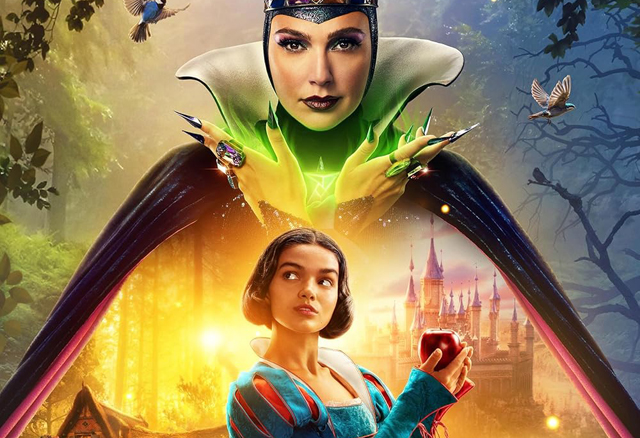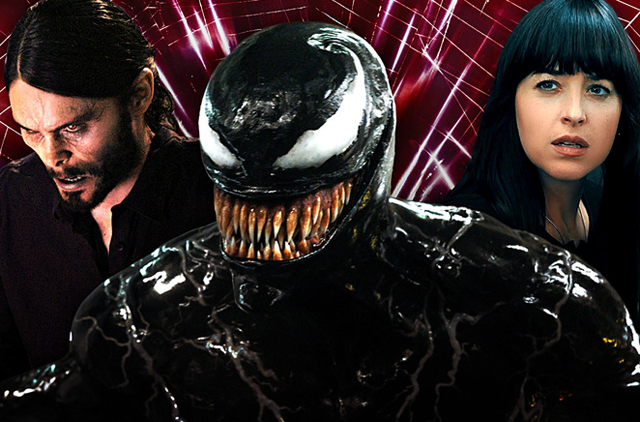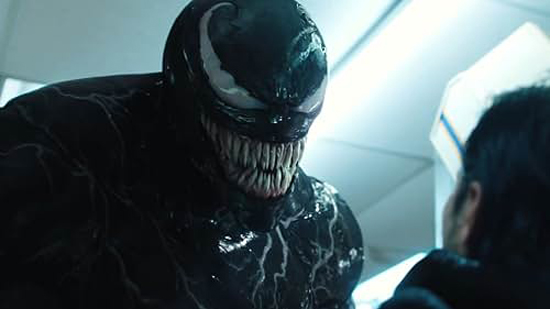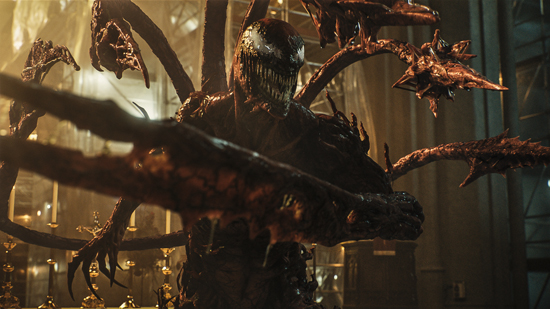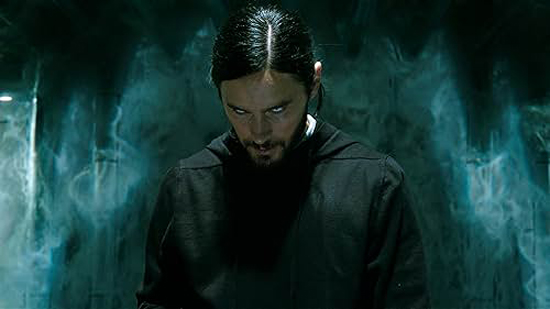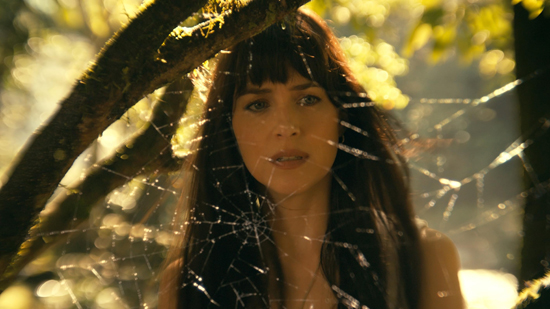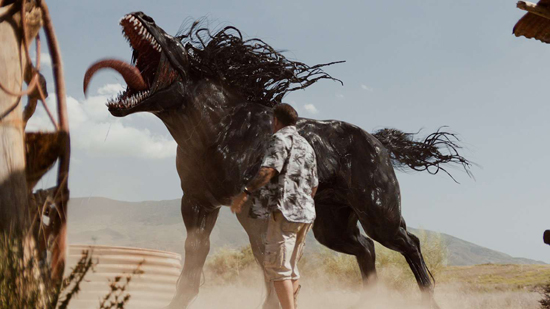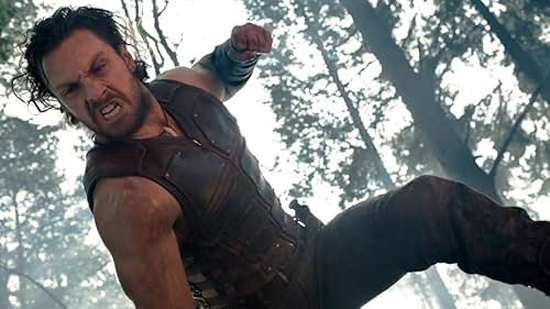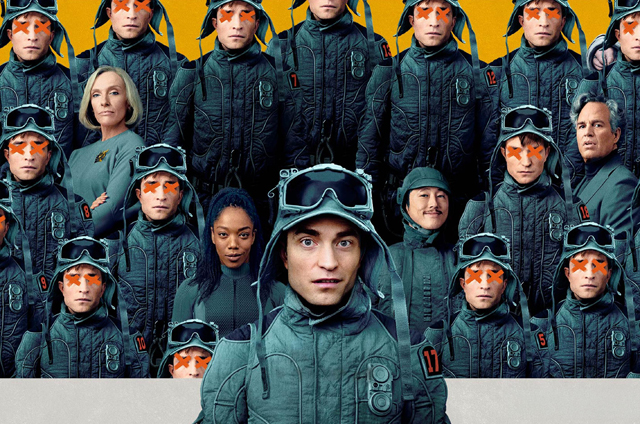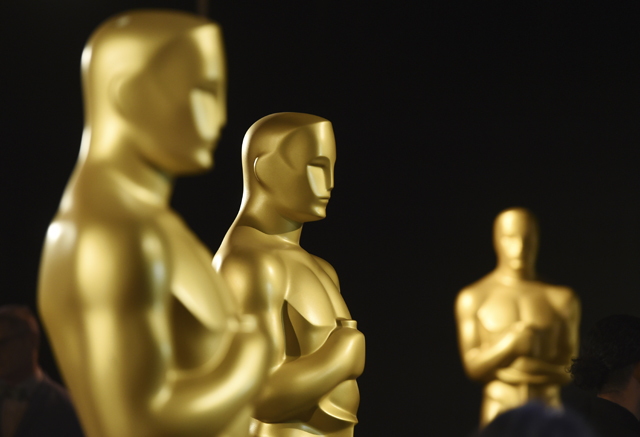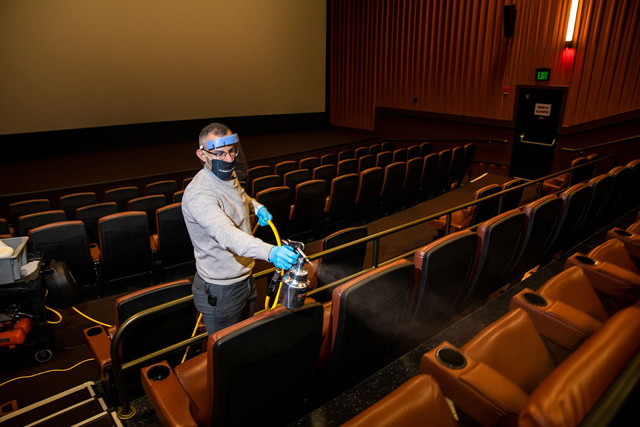
When we entered the year 2020, global box office was at it’s peak. Carried by major franchises like Marvel and Star Wars as well as a flurry of rising markets in places like China, global box office receipts hit a total of $42 billion in 2019. And the movie theater business was thriving as a result. The only thing at the time that theaters had to worry about was the rise of streaming, which was about to explode into the new year. Netflix had dominated the market through the decade, but both Disney+ and Apple TV+ made their big launch in the Fall 2019 season, and HBO Max, Peacock and Paramount+ were gearing up for theirs in the months ahead. Indeed, were things to remain the same in 2020 it was very likely that Hollywood was going to see yet another big year of generated revenue off of multiple modes of entertainment. Unfortunately, history had other plans, not just for the movie business, but for everyone and everything. There were news stories of a novel coronavirus starting to rapidly spread across China in the latter months of 2019, and while medical professionals were raising alarms about what they were seeing, it remained business as usual through the start of 2020 here in America. The new year rang in without incident. We had a Super Bowl and an Oscars ceremony that were exciting but normal. And at the box office, the most noteworthy thing to happen was the surprising turnaround success of the Sonic the Hedgehog (2020). But, the news of the virus spreading began to go from the back page to the front page, and suddenly the fear of the virus coming to our shores no longer seemed remote, but certain. Eventually, all quarantines failed and the Covid-19 virus strain had reached North America and soon after it would be a global pandemic, the likes that our world hadn’t seen in over 100 years. People suddenly growing ill and even dying was horrible enough, but the necessary step we had to take after in order to stop a bad situation from getting even worse would themselves have a harsh effect on everyone. No one was spared from the fallout of this new pandemic reality, including the movies.
On March 16, 2020, it was announced that the three biggest movie theater chains in North America would be closing all of their location, and independent theaters followed suit, bringing all of cinema to a complete standstill, something that it had never experienced before. The last time a global pandemic happened that reached all corners of the Earth, it was in 1918 with the influenza pandemic, also commonly referred to as the Spanish Flu. Movie at that time were still in their infancy; a novelty that had yet to reach every town in America. The incubation rooms of movie theaters just didn’t exist in those days, so Hollywood and the theatrical industry just never had to think about such a event happening that would affect their business in such a profound way. It’s kind of astounding to think of the passage of time it was in between these two monumental pandemic events, that the whole of cinema history from D.W. Griffith’s The Birth of the Nation (1915) to the aforementioned Sonic the Hedgehog happened in between them. All the movies of Charlie Chaplain, Fritz Lang, Alfred Hitchcock, John Ford, Billy Wilder, William Friedkin, Francis Ford Coppola, Martin Scorsese, Steven Spielberg, and Quentin Tarantino, were seen in between these pandemics. And also how much the movie experience changed within those 100 years, going from small screening rooms to giant movie palaces to the the multiplexes we see today. The movie business had seen it all, except a global threat that brought all life to a standstill. But, the movie theaters had no choice. In order to prevent our medical system from being overwhelmed by this rapidly spreading virus, all businesses had to conform to the recommended guidelines set by the CDC, which said the best way to mitigate the spread was social distancing and wearing of masks. This left virtually all non-essential businesses unable to function as is, especially movie theaters and other entertainment venues that compact a lot of people into a confined space. In the months ahead, there would be flexibility with these guidelines in less populated areas, but considering that the hot spots for the virus were in densely populated centers like Los Angeles and New York, the very markets that the movie business was reliant upon, it became very clear that this pandemic was not going to go away so quickly.
To give you a sense of the impact that living through a pandemic had on a movie lover’s experience, I’m going to share my own personal journey through this uncertain time. I live in one of those big city markets (Los Angeles to be exact) and March 2020 was a pretty surreal time. It wasn’t just the movie theaters that shut down, but all production in general. Los Angeles is the entertainment capital of the world, with many residents here reliant on there being an active industry continuing to make more movies. But, those studio lots also were emptied of non-essential workers, and the industry quickly had to adapt to a new “work at home” normal. For me, as an avid movie goer, I had to adapt to one of my favorite past times now being unavailable for an unknown amount of time. It would be five whole months before I would see the inside of a movie theater again, and it wasn’t even my local theater either. Just to show how much I value being in a movie theater, I drove 120 south to San Diego just so I could watch Christopher Nolan’s Tenet in the brief window that movie theaters were allowed to re-open in parts of California, with San Diego being the closest one. Eventually, closer theaters would re-open in Ventura and Orange County, but anything in a short driving distance remained closed for an entire year; finally re-opening in March 2021. But, even with those restrictions in place, I still went out of my way to get as close to having the theatrical experience as I could. One of the things that saw a surprising revival in the midst of the pandemic was the Drive-In experience. Two such drive-in theaters still existed in my area, the Vineland Drive-In in the City of Industry and the now demolished Mission Tiki Drive-In in Montclair. They may have been further out than my local theaters, but they were always open every night, and I managed to make my way to these places at least once a month through the pandemic period. For the sake of my sanity during that time, these places were life savers because they filled that need to see movie on the big screen.
But if there was anything to also fill that void, it was streaming. I already had a Netflix account long before the pandemic, but I was fairly new to Disney+, HBO Max and Apple TV+ as I became an early subscriber to those services. Little did I know that they were going to be the sole outlet for Hollywood movies for quite a while before theaters re-opened. While I still went out of my way to see a movie first on the big screen, there were other movies that I had no other choice but to watch them at home. A lot of studios had to offload their 2020 releases onto streaming platforms, while the bigger films were pushed further back on the calendar. Streamers were the beneficiaries, but such a drastic measure would have downstream repercussions, especially when it came to compensation for actors and filmmakers who had theatrical percentages written into their contracts. But, with box office so depressed by the pandemic, movies either had to wait a bit longer for their release, or go straight to streaming, and a lot of movies ended up in the latter column. Apple TV+ for instance landed the Tom Hanks war flick Greyhound (2020), while Disney made the controversial choice of releasing their Pixar film Soul (2020) on Disney+. There was also the Premium VOD model where movies were made available to rent at a premium price on platforms like Amazon, Apple, and Vudu, which is how Dreamworks chose to release their sequel Trolls World Tour (2020). Studios were desperate for any revenue they could get and the streamers could leverage that by getting them to agree to shorter theatrical windows. Nevertheless, the number of movies that could get released, either through streaming, theatrical, or a combination of the two was limited. Hollywood was just uncertain about what the future was going to be for their industry. The pandemic would pass in time, but what would be left of the theater industry? Was streaming indeed the future of exhibition and movie theaters obsolete? Just like all the rest of us waiting on the vaccine to help speed up a recovery, the movie theater industry was just taking things one day at a time. Movie production finally started again, but under a new normal of constant testing and safety protocols, which led to lengthy productions and bloated budgets. But, as time passed, things would clarify itself as the pandemic finally passed.
The outbreak of Covid-19 was a shock to the system for every aspect of life; one that we hopefully won’t have to repeat in our lifetimes. Going into 2021, after a year of masking and social distancing, we were finally able to start the recovery once the vaccine became widely available. Movie theaters took a while to recover, however. Even with movie theaters in the major markets of Los Angeles and New York allowed to operate again, there were still social distancing measures put in place. People had to sit with empty seats on either side for the first couple months. And even in that situation, the choices of movies was still fairly light. All the blockbuster films were still being held back until later in the year, so what we were getting in early 2021 were low risk movies that the industry was comfortable with playing in half full theaters. But, there were some movies that managed to shine through. Godzilla vs. Kong (2021) managed to be the first post-pandemic movie to cross the $100 million mark, even with a hybrid streaming/theatrical release. A Quiet Place: Part II also became the first movie since March 2020 to have an opening weekend above $30 million. But, even as blockbusters started to return to the market, it was still evident that the pandemic took it’s toll on the theatrical industry. Between 2020 and now, it is estimated that nearly 3,000 screens have been lost due to the after effects of the pandemic across the country. Small, independent cinemas were hit the most by the lockdowns, and the big chains barely scraped by. AMC, the largest chain, may have fallen into bankruptcy by now had meme stocks not come to their rescue. But even five years out, some theater doors remain shuttered and a few of them lost forever. One of the crown jewels in Los Angeles’ collection of movie theaters, the Arclight Hollywood (home of the Cinerama Dome) still sits empty to this day, with it’s door boarded up like an abandoned home. In terms of returning back to the heyday of the theatrical market of the 2010’s, it would be impossible given the fact that there were just fewer venues in general to host these movies now.
But, the last five years have also shown us that the theatrical market is not on it’s way out either. If anything, the theatrical model has proven to be surprisingly resilient in the face of cataclysmic change. One of the surprising signs emerged during the Holidays of 2021. Right before Christmas, Marvel and Sony put out their film Spider-Man: No Way Home (2021), their highly anticipated sequel that not only performed as well as the other films in the series, but also broke records, even in the midst of some lingering Covid protocols. Movie theaters by this time had been loosening their social distancing standards so that they could finally fill all the seats in an auditorium, but masking was still enforced. None of this stopped people from seeing No Way Home, and the film went on to have a #2 all-time opening weekend of $260 million and an eventual worldwide total of $1.9 billion. It defied all protocols and showed that a movie could indeed perform like it used to before Covid. But, it wouldn’t be the case with every movie. Apart from Spider-Man, there weren’t a whole lot of movies that played to sold out crowds. But, the right kinds of movies would come in the years that followed, including Top Gun: Maverick (2022), Avatar: The Way of Water (2022), Barbie (2023), Oppenheimer (2023), Inside Out 2 (2024), and Wicked (2024). What these movies showed more than anything is that there are just some films that can only play on a big screen to be fully appreciated, and it was motivating the studios to reconsider their decisions in what movies they wanted to focus on. A lot of films that were once green lit as a big draw for streaming were now being looked at as a possible theatrical release instead. The recent success of Moana 2 (2024) is an especially good example of the trends shifting back in theatrical’s favor. Had Disney moved forward with their Disney+ Moana project, then they would’ve missed out on a billion dollar worldwide gross; a cash flow that they can now benefit from that they otherwise would not have seen from streaming.
And the streaming market has also changed dramatically in the last five years after Covid. In the immediate months of the lockdown, streaming was the only game in town, and it saw a rapid growth as people were now stuck in their homes with no other outlet than to watch whatever was on TV. It was a strange confluence of events with the global pandemic happening just as the streaming wars was about to ramp up. And in that time, we saw some bold moves made by the studios to bring more eyes to their platforms. Some of those moves, however, would prove to foolish in the long run. Warner Brothers’ decision to release their entire 2021 schedule on HBO Max day and date alongside theatrical in a program called “Project Popcorn” proved to be a disaster, because it clearly diminished box office while bringing only a scant few subscribers to their platform. That failed experiment is largely the reason it’s called Warner Brothers Discovery now. Disney’s decision to release three Pixar movies in a row on Disney+ without a theatrical release also proved to be a foolish move because it diminished the once valuable Pixar brand and caused them to underperform once they finally put the beloved studio’s movies in theaters with Lightyear (2022) and Elemental (2023). It wouldn’t be until Inside Out 2’s record performance that Pixar finally found their way back after their parent company neglected them. But what the streaming wars also showed us is that a crowded market also has drawbacks of it’s own. While there were good things to watch on all the platforms, the total cost of having to subscribe to all of them proved to be too much for a lot of people whose wallets were hurt by the pandemic and the inflation that followed it. Churn has been the worst enemy of streaming platforms, as people are choosing to subscribe only when they see one particular show or movie they like, and then they cancel immediately afterwards. The viewership numbers were just not justifying the enormous costs the studios were putting into creating exclusive content, and that led to a bunch of the Hollywood studios starting to reign things back in and playing it more safe. Ironically, all of these potential Netflix killers failed to do just that, as Netflix still remains the top performer in the market, though even they felt a bit of the contraction in the market post-pandemic too. One important thing that Hollywood also took away as a lesson is that box office returns are a better way to gauge the success of their movies, because it’s a definitive sum that tells you how much a single project is worth in the market, as opposed to the lump sum of a streaming subscription that’s spread across the entire catalog.
Now that it’s been five years since the initial beginning of the lockdown, I can tell you that I still have terrible memories of that experience, but I also memories of the bright moments that helped me get through it all. Had my desire to see movies on the big screen not been so key to my happiness in that time period, I wouldn’t have gone out of my way to go out to the Drive-In theaters in my area. Sadly, their revival during the pandemic was short lived. The Mission Tiki in Montclair has since been leveled and turned into a housing development for the city, while the Vineland Drive-In is only open for special events and the occasional summer program while mostly operating as a swap meet during the day. During the pandemic, I may have watched 20 or more movies between the two of these venues, so I am eternally grateful for what they gave me in that lost year and I’ll miss that part of the experience for sure. Even though the lockdowns lasted the longest in my area compared with every other part of the country, we were lucky to not see many closures in the wake of the pandemic. All of my local theaters managed to re-open, with some of them being salvaged by new ownership. Sadly, the Arclight Hollywood is still in limbo, and despite some promises made by the property owners to eventually get it up and running again, the theater still sits empty with their screens still dark five years later. In terms of the theatrical experience itself, it does feel like things are back to normal, except when it comes to the choices in movie itself. Hollywood still is suffering from a post-pandemic identity crises as it tries to figure out what’s worthy of theatrical and what’s worthy of streaming. This unfortunately is leaving the movie theaters themselves with a slim selection of movies to put in their theaters. It’s either a choice between low risk indies or increasingly hollow blockbuster films based on established IP. The mid-level movie is all but gone from the multiplex, and that’s making the range between the movies all the more greater. Movies either need to break the bank, or be so small that they don’t risk losing money. It was said that it would take a few years for the theatrical market to make a full turnaround, and I believe the last few turbulent years have proven that. But, movie theaters still endure, which is astonishing given the near apocalypse that they faced during Covid. The movies faced a test they were never prepared for with the pandemic, and though there were casualties along the way, somehow we found a way to get us close to normal again. I feel closer to the theatrical experience even more now after having my local theaters closed for a full year. Hopefully it will remain with us for quite a while longer, and that cinema itself will be able to find that happy medium between what belongs on the bog screen and what does not.
